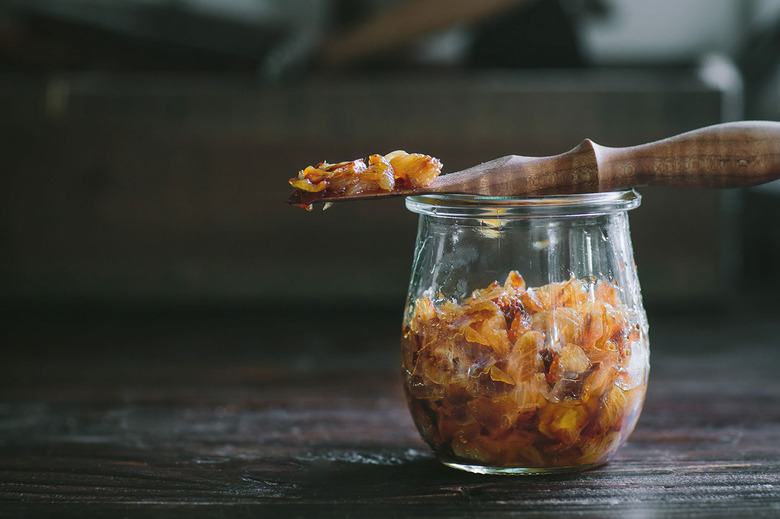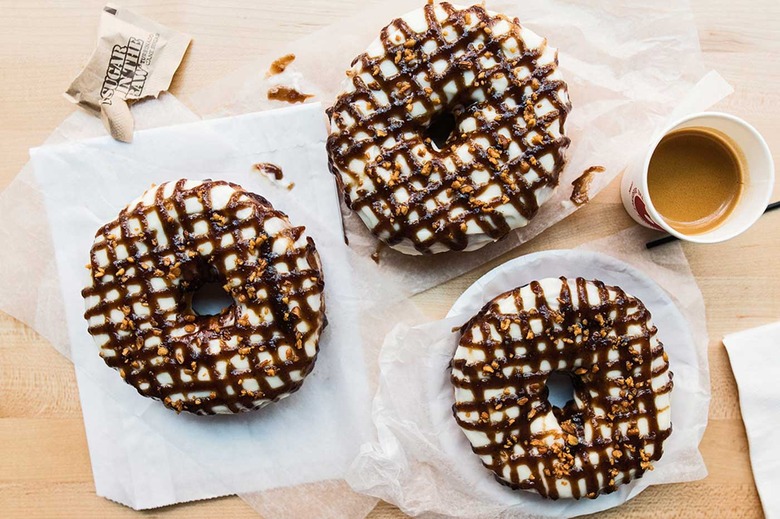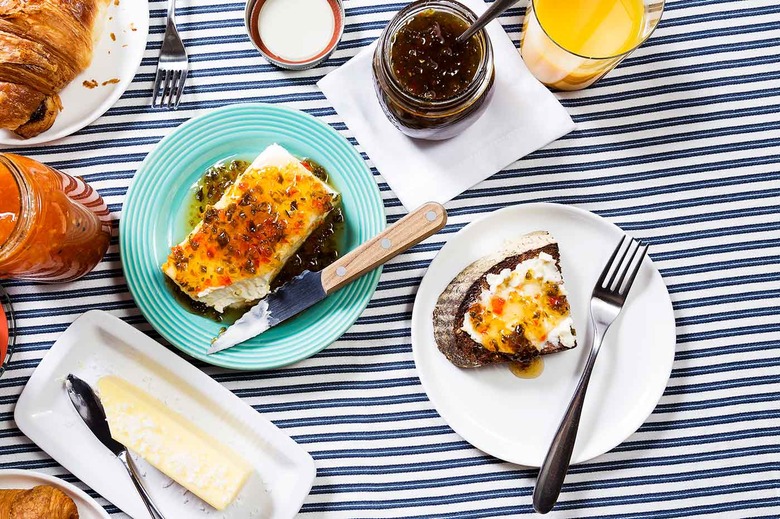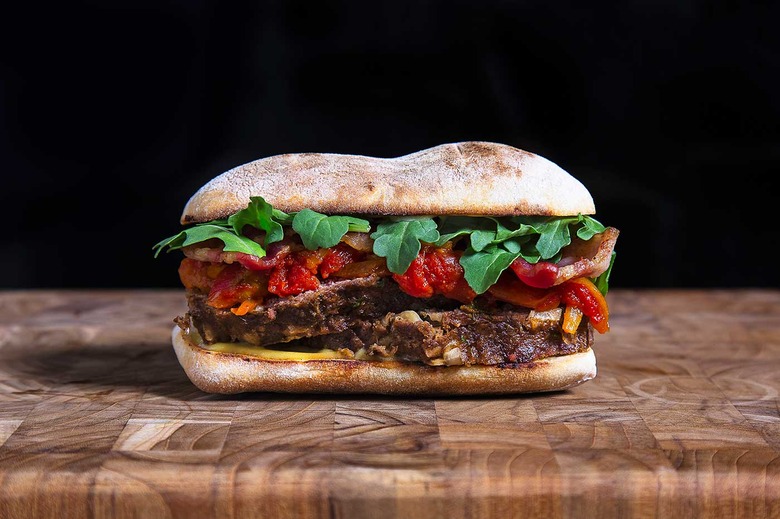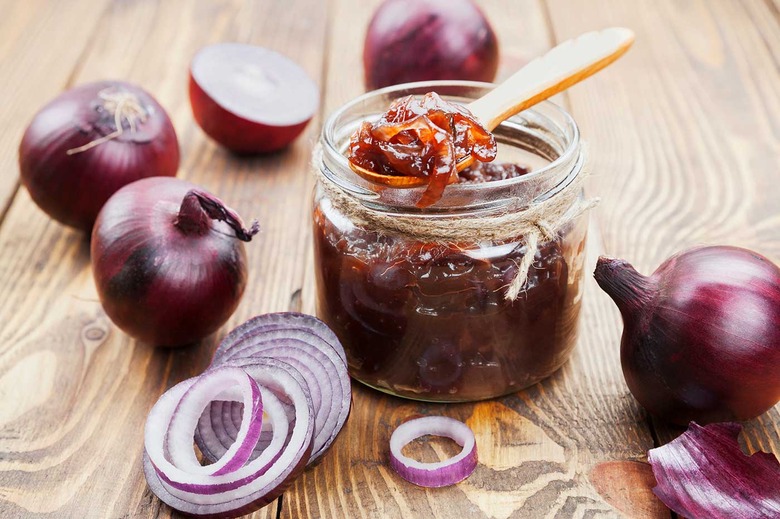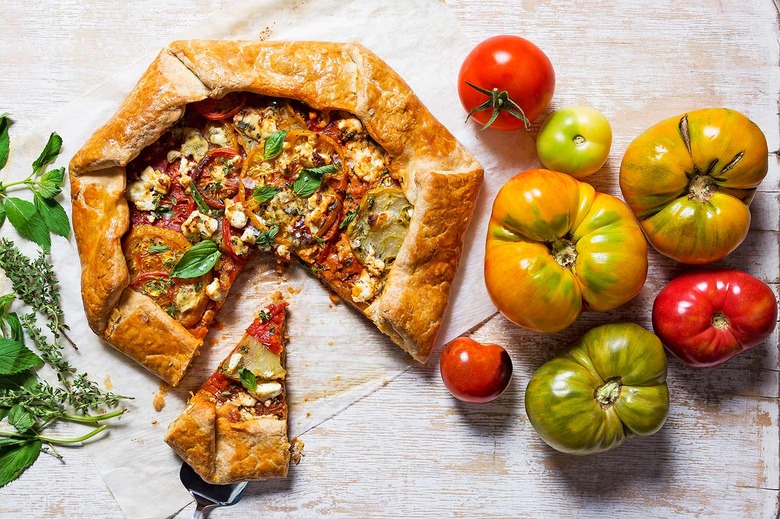Savory Jam Recipe
Leave the oversweetened jars on the grocery store shelves
Jam. Jelly. Marmalade. Preserves.
Whatever you call it, we can all agree it's delicious. But if the very mention of the stuff summons cravings for sugary breakfasts and jelly-coated desserts, there's a whole other side of jam worthy of your attention.
The next time you're looking to beef up a steak or perk up a chicken, skip the hot sauce and consider a savory jam instead. Though sweet, fruity spreads have traditionally monopolized the conversation, savory jams are a surprisingly effective way to add concentrated flavor and complexity to appetizers and main courses.
"Savory jams are amazing on cheeses and charcuterie boards, a staple for any BBQ, and go great on cooked proteins," says chef Trevor Bird, runner-up on season two of Top Chef Canada and chef/owner of Vancouver's Fable Kitchen. After learning to adapt savory flavors into jams as a line cook at Jean-Georges, Bird created his signature Black Pepper Jam, which became so popular at Fable that he now sells it by the jar.
But you don't have to cross the border to get your savory jam fix. They are easy to make in your own kitchen, especially if you keep Bird's tips and tricks in mind.
Pick two to three primary flavors.
When conceptualizing your savory jam, pick two or three ingredients to serve as your base flavor and build the recipe from there. "You can jam anything," Bird explains. "Black pepper and green onions? Jam it! Tomato and garlic? Jam it! Porcini and thyme? Jam it!"
Stick to a tried-and-true ratio.
There's no set-in-stone recipe for savory jams, but Bird's classic ratio will set you up for success. By volume, all of Bird's savory jams begin with:
1 part base ingredients
1 part acidity
1 part sweetness
¼ part aromatics
"Jam implies sweetness, so to make it savory, we have to balance the sweetness with sour. Any acid is good for that," Bird says.
Don't forget salt.
Adding salt to a jam base is necessary to round out the sweet and sour flavors. To avoid oversalting a jam that simmers and reduces for hours, Bird weighs the jam ingredients before simmering, and then adds .6 percent salt by weight to the mixture.
For example, if the mixture containing the base ingredients, aromatics, and acidic and sweet components weighs 1,000 grams, add 6 grams of salt to the mixture (1,000 x .006 = 6). Yes, math is hard. But it's a proven formula.
Get creative with ingredients.
Keeping the ratio in mind, there's no reason why you shouldn't get creative with your ingredients. Instead of white sugar, add honey, maple syrup or brown sugar for sweetness. "Try lime juice, orange juice or sherry vinegar for acid, and miso, soy sauce, fermented black beans for salt," Bird recommends. "Shallots and garlic always add a good amount of flavor to any savory jam, but don't be afraid to finish with fresh herbs, or spices as well."
Reduce, reduce, reduce.
The gelling agent for most sweet jams is pectin, a gelatinous starch found naturally in high concentrations in firm fruits like apples and quince. Since savory jams may not include high-pectin fruits, a similar texture is acquired through long, slow simmering. "I am a bit of a naturalist when it comes to consistency," Bird, who prefers to cook down his jams until they reach his desired consistency, says. "But, it would be appropriate to add a thickener like powdered pectin if you achieve the flavor you want."
Brooke Siem is a writer and professional chef currently meandering around the world. Follow her on Instagram at @brookesiem.
Goat Cheese and Caramelized Onion Jam Doughnuts
Brioche doughnuts are topped with a bacon fat and goat cheese glaze before getting drizzled with tangy caramelized onion jam. Sprinkle on toasted pine nuts for crunch, and you're set.
Photo: Tasting Table
Tomatillo Jam and Yogurt Dip
Thanks to their naturally high pectin content, tomatillos are made for jamming. Use them in this dip that hits all the right notes: creamy, sweet and savory.
Photo: Tasting Table
Spring Onion and Sherry Vinegar Jam
Cook down spring onions with sherry vinegar to make a condiment that works just as well on toast as it does over an equally springy lamb chop.
Photo: Eva Flores
Hot Pepper Jelly
Jalapeño, poblano and bell peppers are suspended in a sweet apple cider vinegar jelly for a tangy and spicy spread—perfect day or night.
Photo: Tasting Table
Meat Loaf Sandwich with Tomato Jam
Burnt Onion Jam
Made with just three ingredients, this sweet and smoky burnt onion jam is a condiment that will give even caramelized onions a run for their flavor.
Photo: minadezhda/Getty Images
Heirloom Tomato Galette
A buttery, flaky crust holds together this free-form pie of multicolored tomato slices layered over a bright tomato jam.
Photo: Tasting Table
